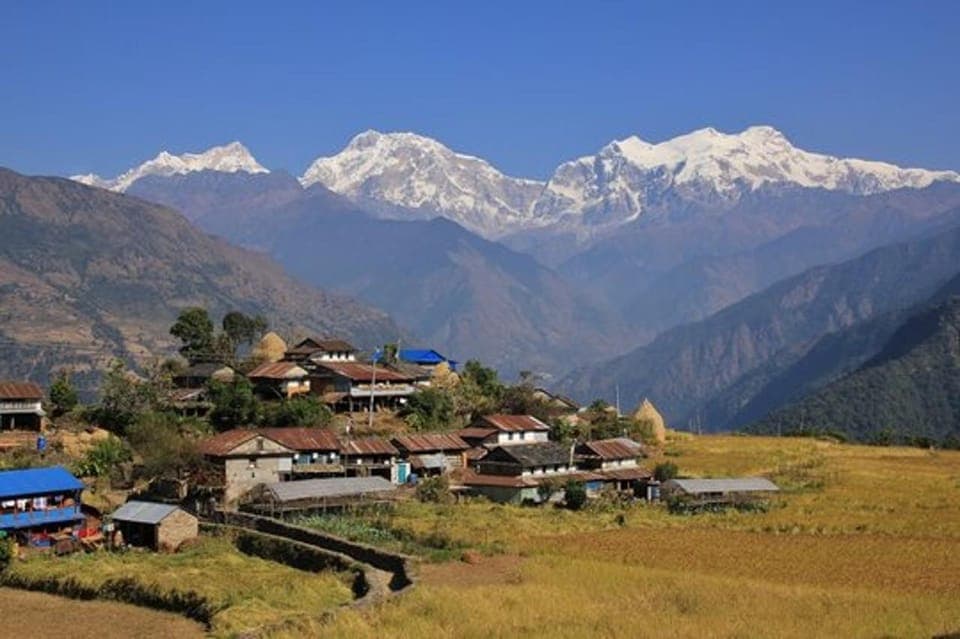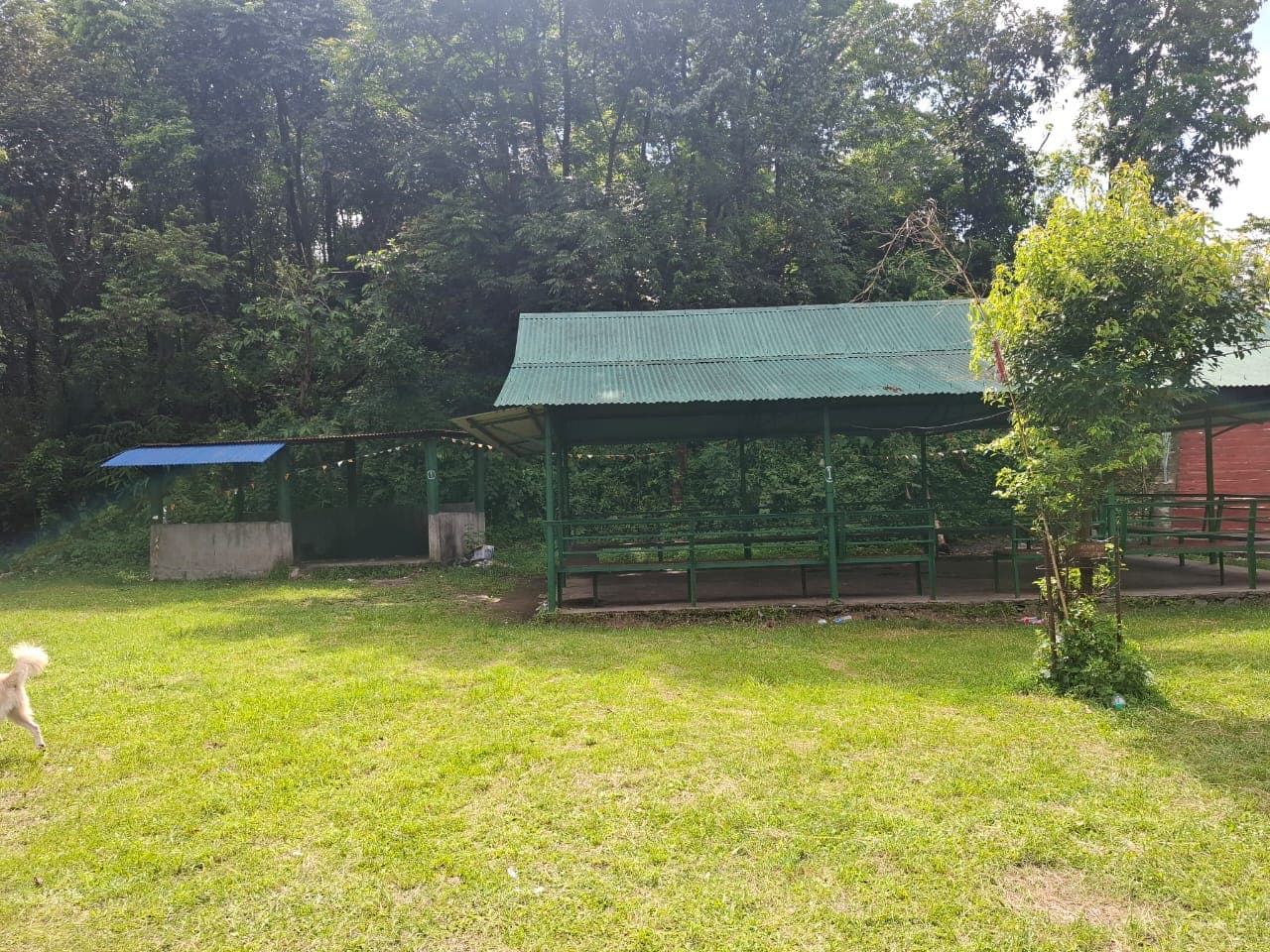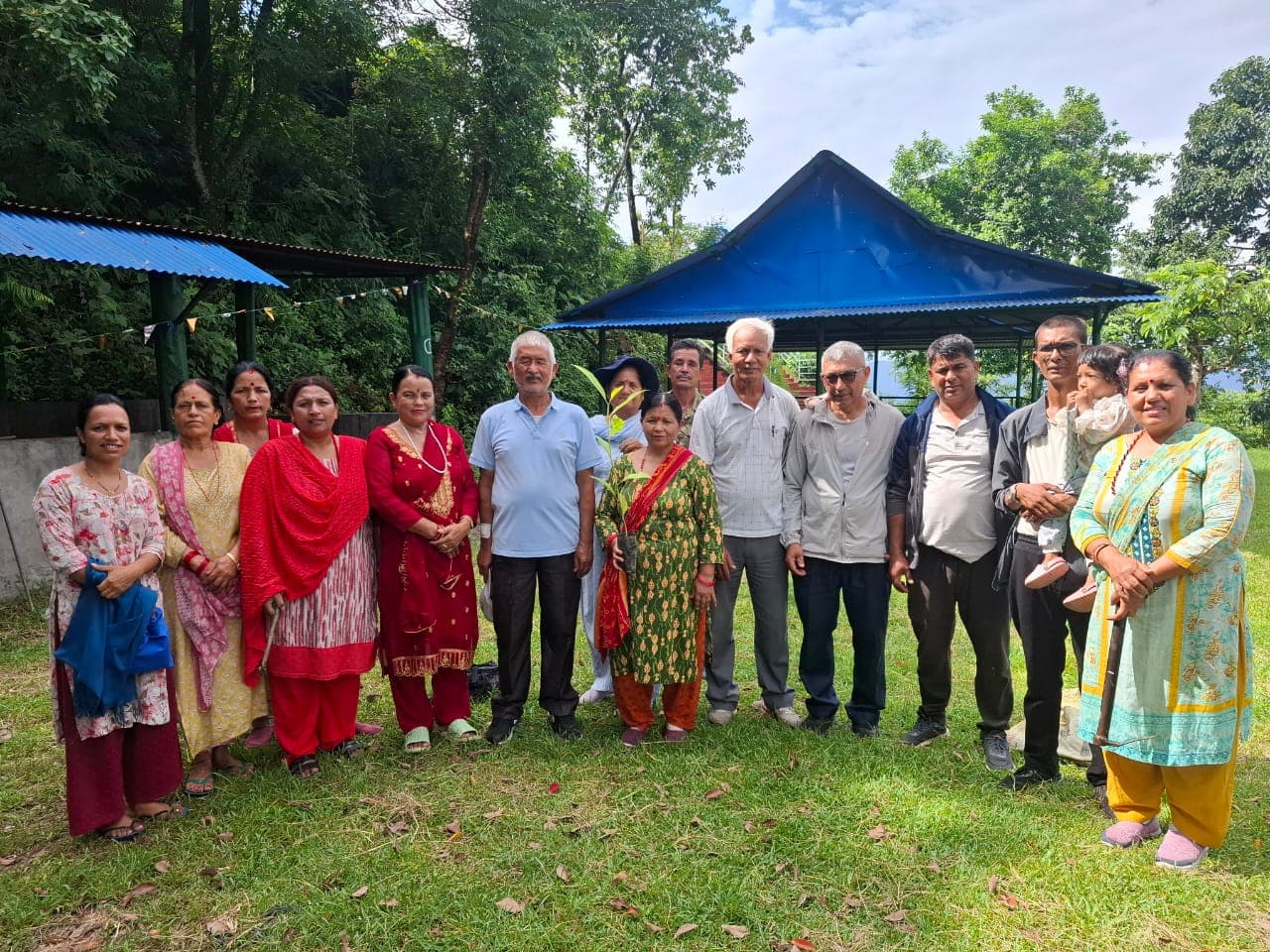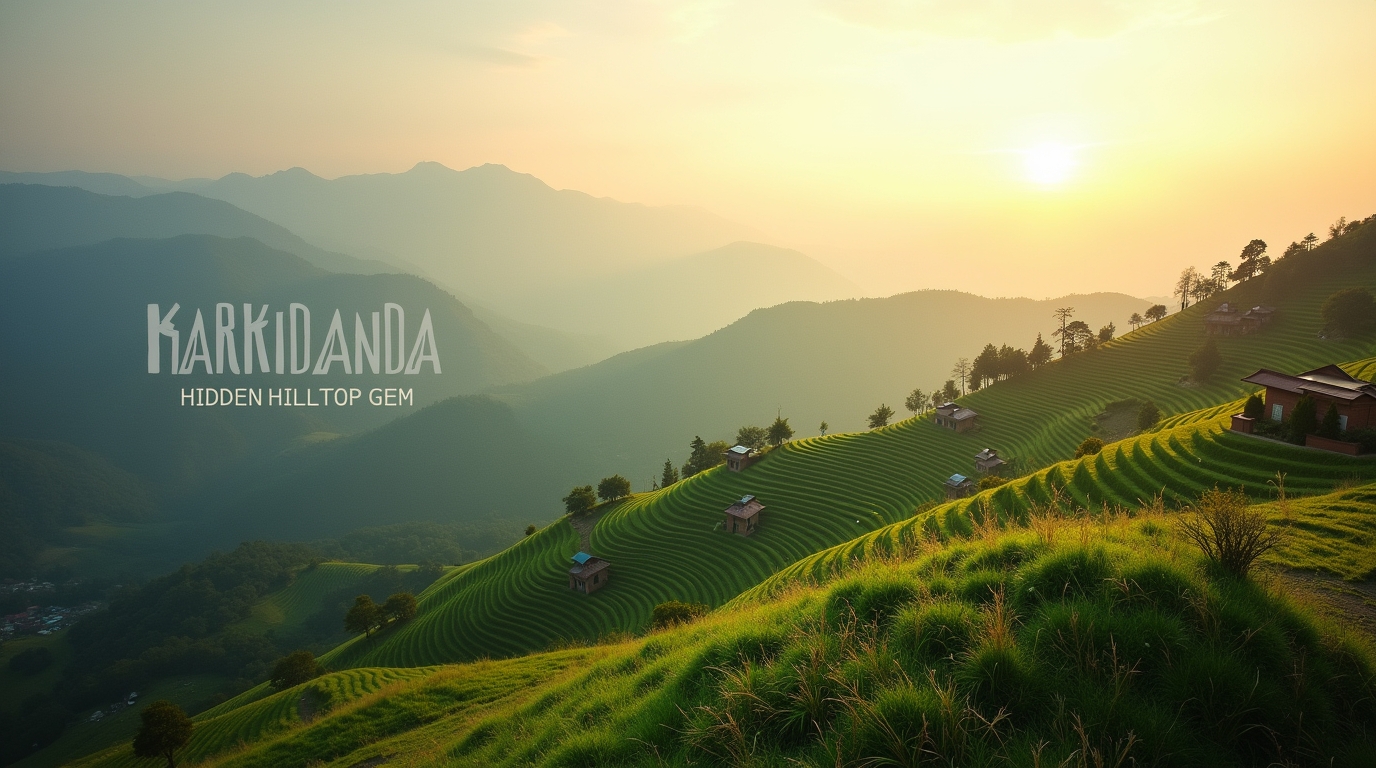
Experience Nature's Beauty at KarkiDanda
A community-managed haven for picnics, gatherings, and creating unforgettable memories in nature's embrace.
A Community-Driven
Picnic Paradise
KarkiDanda is more than just a picnic spot—it's a community initiative dedicated to preserving natural beauty while creating spaces for people to connect, celebrate, and unwind.
Eco-Friendly
Sustainable practices in all our operations
Community-Led
Managed by locals who care

Curated Experiences for Every Occasion
From intimate gatherings to large celebrations, we have the perfect package for your needs.

Picnic Spot 1

Picnic Spot 2

Picnic Spot 3
A Glimpse into Natural Serenity
Enjoy this beautiful scenic piece that captures the essence of our natural surroundings.
Latest From KarkiDanda
Stories, updates, and insights from our community.

A Photographer’s Paradise: Capturing KarkiDanda’s Hidden Beauty
Tucked away above the Pokhara valley, KarkiDanda is more than just a scenic hilltop—it’s a photographer’s dream. With panoramic views, lush greenery, and a rich tapestry of village life, this hidden gem offers endless opportunities to capture nature, culture, and moments that tell a story.
Golden Hour Magic
For photographers, the early morning and late afternoon light are golden opportunities:
Sunrise Over the Hills – Watch mist rolling across terraced fields as the sun casts golden hues on distant peaks.
Sunset Serenity – Capture the valley bathed in warm light, with shadows playing across the slopes.
Sky Palette – The changing colors of the sky, from soft pink to vibrant orange to deep indigo, create stunning backdrops for every shot.
Even on cloudy days, the diffused light enhances textures and colors, making every shot unique.
Nature in Every Frame
KarkiDanda’s landscape is alive and ever-changing:
Terraced Farms – Symmetrical patterns of crops like millet, maize, and potatoes provide geometric beauty.
Wildflowers and Forests – Colorful blooms, bamboo groves, and dense green forests add vibrancy and texture.
Himalayan Vistas – The distant Annapurna and Machhapuchhre ranges offer breathtaking wide-angle opportunities.
Macro photographers will also find delight in tiny details: dew on leaves, butterflies fluttering, bees on flowers, or birds perched among branches. Nature here is dynamic, rewarding patience and observation.
Capturing Village Life
What makes KarkiDanda unique is its authentic rural culture:
Traditional Homes – Stone and timber houses showcase architectural charm and rustic textures.
Festivals and Rituals – If your visit aligns with local celebrations, you can photograph vibrant colors, music, and dances.
Daily Life – Farmers working in the fields, children playing, elders tending gardens — these candid moments tell real stories of life in harmony with nature.
Including people in your frames adds scale, warmth, and storytelling depth, transforming photographs into living narratives.
Best Spots for Photography
While the entire ridge is photogenic, a few spots stand out:
Terrace Overlook – Ideal for panoramic sunrise and sunset shots.
Forest Pathways – Capture light filtering through leaves, creating natural frames.
Village Corners – Authentic architecture and daily life scenes.
Hilltop Viewpoints – Wide-angle landscapes including valleys and distant mountains.
Rivers and Streams – Small water flows glinting in sunlight, perfect for reflective and long-exposure shots.
Pro tip: Walk a little off the main paths—hidden corners often provide the most unique and untouched compositions.
Photography Tips at KarkiDanda
Timing is Key – Early morning and late afternoon provide the best natural light.
Include Human Elements – Locals or travelers in your shots add scale and storytelling.
Respect Privacy – Always ask permission before photographing people.
Experiment with Angles – Shoot from terraces, low angles, or elevated viewpoints for unique perspectives.
Play with Light – Mist, shadows, and sun rays can transform ordinary scenes into magical compositions.
KarkiDanda rewards patience—spend hours observing subtle changes in light, wind, or wildlife, and you’ll be rewarded with truly unique shots.
Beyond Photography
While KarkiDanda is a photographer’s paradise, it also offers experiences that enrich your creative journey:
Sketching and Painting – Artists can find inspiration in terraces, mountains, and village scenes.
Meditation in Nature – Quiet corners allow reflection and mindfulness, enhancing the ability to capture emotion in photography.
Eco-Tours – Participate in sustainable farming or tree planting to connect deeper with the land.
This is a place where creativity and nature converge, offering more than just visual appeal.
Conclusion
KarkiDanda is more than a destination—it’s a living canvas for photographers, artists, and nature lovers alike. With its combination of natural beauty, authentic village life, and stunning Himalayan backdrops, every visit offers new inspiration.
For those who see the world through a lens, KarkiDanda is a paradise waiting to be captured, one frame at a time.

The Healing Power of Nature: Why We Need the Outdoors More Than Ever
In today’s fast-paced world, we often forget the profound connection humans have with nature. From lush forests and flowing rivers to mountains and meadows, the natural world is not just a backdrop for life — it’s a source of healing, inspiration, and balance.
Nature and Mental Health
Studies show that spending time in natural environments reduces stress, anxiety, and depression. Even short walks in a park or time spent among trees can:
Lower cortisol levels (stress hormone)
Improve mood and emotional wellbeing
Boost creativity and focus
The simple act of listening to birdsong or feeling a gentle breeze can reset our minds in ways no screen or device can replicate.
The Beauty of Seasonal Changes
Nature is always evolving, and each season brings its own wonder:
Spring: Fresh blooms, chirping birds, and renewal of life.
Summer: Vibrant greenery, long sunny days, and energetic wildlife.
Autumn: Golden and crimson leaves, crisp air, and the sense of change.
Winter: Quiet landscapes, frost-kissed mornings, and reflective stillness.
Observing these cycles teaches us patience, adaptability, and appreciation for life’s rhythms.
Nature as Inspiration
Artists, writers, and thinkers throughout history have turned to nature for inspiration. The colors, patterns, and harmony in forests, rivers, and mountains fuel creativity. Whether you are a painter, photographer, or writer, stepping into the outdoors awakens new ideas and perspectives.
Eco-Conscious Living
Connecting with nature also encourages responsible living. Simple actions like planting trees, reducing waste, and protecting wildlife habitats can make a lasting impact. Respecting nature isn’t just ethical — it ensures future generations can experience its beauty and benefits.
Ways to Reconnect with Nature
You don’t need to travel far to experience the outdoors. Here are simple ways to bring nature back into your life:
Take daily walks in parks or green spaces
Practice gardening or plant indoor greenery
Go for hikes, nature trails, or camping trips
Observe wildlife or birdwatch
Unplug from devices and spend quiet time outdoors
Even small, consistent exposure can improve mental clarity, physical health, and overall happiness.
Nature is more than scenery — it is a living, breathing companion that nurtures our mind, body, and soul. In every rustling leaf, flowing stream, and mountain peak lies a lesson, a moment of calm, and a reminder that life is interconnected.
By taking the time to step outside, observe, and care for the environment, we not only heal ourselves but also protect the world that sustains us.
Embrace nature. Listen, observe, and let it renew your spirit.

A Hidden Hilltop Haven for Nature, Culture, and Community
When most travelers think of Pokhara, the lakeside buzz and Annapurna’s grandeur often come to mind. Yet, tucked quietly away from the city’s hustle lies KarkiDanda — a hilltop destination that beautifully blends natural beauty, cultural heritage, and community spirit. More than just a picnic spot, it’s a place where visitors discover the authentic soul of Nepal.
Where Nature Paints the Horizon
Perched above the valley, KarkiDanda offers panoramic views of Pokhara, with the Annapurna and Machhapuchhre ranges framing the skyline.
Sunrise & Sunset Magic – Watch the sun rise over Himalayan peaks or set in golden hues over the valley.
Seasonal Beauty – From spring wildflowers to winter clarity, each visit brings a different mood and scenery.
Fresh, Peaceful Atmosphere – Surrounded by forests and farms, it’s a refreshing escape from crowded tourist hubs.
A Community Rooted in Tradition
What makes KarkiDanda truly unique is not just the view, but the people:
Cultural Harmony – Home to diverse communities including Gurung, Karki, Brahmin, and Dalit families, living together in shared traditions.
Festivals & Rituals – Dashain, Tihar, and Maghe Sankranti are celebrated here with joy, music, and ancestral customs.
Heritage Homes – Traditional stone and timber houses, some over a century old, carry stories of resilience and craftsmanship.
Sustainability at Its Core
KarkiDanda is more than a destination — it’s a community-led initiative to preserve both nature and culture:
Organic Farming – Locals cultivate maize, millet, and seasonal vegetables using eco-friendly methods.
Tree Plantation Programs – Over 5,000 trees have been planted to protect the environment.
Education & Employment – Scholarships, environmental awareness, and local jobs support the next generation.
By visiting, guests directly support these efforts and become part of the conservation journey.
Perfect Picnic & Retreat Spot
Looking for a refreshing getaway? KarkiDanda has thoughtfully designed picnic areas with modern amenities like:
Clean washrooms and drinking water
Parking facilities
Wide open spaces for gatherings
Scenic backdrops perfect for photography
From family picnics and student outings to meditation retreats and cultural trips — KarkiDanda caters to all.
Why Visit KarkiDanda?
Unspoiled Nature – Far from tourist crowds yet easily accessible.
Cultural Richness – A living museum of traditions, rituals, and rural life.
Community Impact – Every visit supports local people and sustainability projects.
Memorable Experiences – Sunrise views, cultural exchanges, and peaceful escapes.
An Invitation to Explore
KarkiDanda is more than just a hilltop — it’s a story of people, place, and purpose. Whether you’re seeking breathtaking views, cultural immersion, or simply a quiet moment with nature, this hidden gem promises an unforgettable experience.
Plan your visit, and let KarkiDanda connect you to the heart of Nepal — where tradition meets tomorrow.
Send us your feedback !
We would love to hear your thoughts and suggestions.
Ready to Experience KarkiDanda?
Book your visit, plan an event, or join our community initiatives. We're excited to welcome you!
Frequently Asked Questions
Find answers to common questions about our packages.
How far in advance should I book a package?
We recommend booking at least 2-3 weeks in advance for regular weekends and 1-2 months for peak seasons or holidays. For large events or corporate retreats, earlier bookings are advisable.
Can I customize a package to suit my specific needs?
All our packages can be customized. Please contact our team with your requirements, and we'll be happy to create a tailored experience for you.
What is your cancellation policy?
We offer full refunds for cancellations made 7 days or more before your scheduled date. Cancellations within 3-7 days receive a 50% refund, and those within 3 days are non-refundable. However, we do offer one free rescheduling option.
Are there any additional costs I should be aware of?
The package prices include all the features listed. Additional services like extra hours, special catering requests, or premium activities may incur extra charges. We'll always discuss any potential additional costs with you before confirming your booking.
